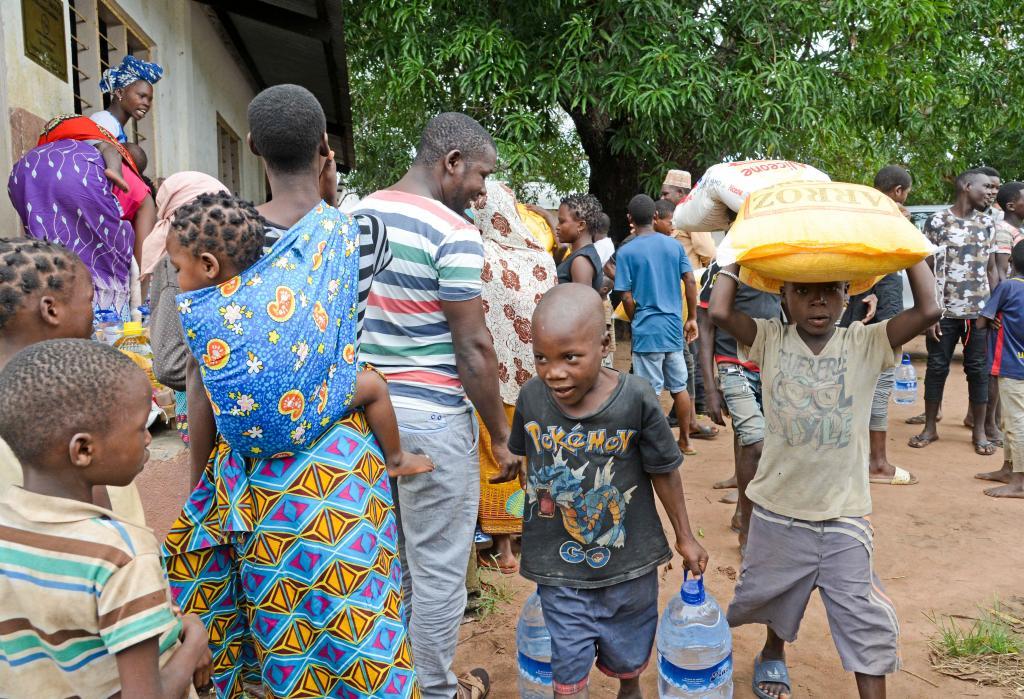

The region has more debt than it can pay off



The debt of low- and middle-income countries in sub-Saharan Africa increased to a record $702 billion in 2020, according to a new World Bank report released October 11, 2021. This is the region’s highest debt burden in a decade.
In 2010, sub-Saharan Africa’s debt stood at around $305 billion. The region has more debt than it can pay, the report showed.
This includes long-term external debt ($589 billion) and short term external debt.
The debt burden in the region rose 5.5 per cent from 2019-2020.
Africa witnessed more than eight million cases, 214,000 deaths and drastic socio-economic effects due to the novel coronavirus disease (COVID-19) pandemic.
Even before the pandemic, the region was in a vulnerable position economically. Its external debt stock had increased by 8.4 per cent between 2018 and 2019.
The report said:
In sub-Saharan Africa, both Ghana and Nigeria recorded a 17 per cent increase in external debt stocks driven by purchases from the International Monetary Fund (IMF) of $1 billion and $3.4 billion, respectively.
The $3 billion pre-pandemic Eurobond issued to Ghana and a 16 per cent rise in the non-guaranteed debt of the private sector in Nigeria were reasons for this growth in debt burden, said the report.
Debt-GNI ratio rose 20 percentage points
In low- and middle-income countries worldwide, rise in external indebtedness outpaced Gross National Income (GNI) and exports growth, according to International Debt Statistics 2022 report.
In sub-Saharan African countries too the debt-GNI ratio rose nearly 20 percentage points in a decade to 43.7 per cent in 2020 from 23.4 per cent in 2011.
Debt-GNI ratio reflects a country’s capacity to repay debts. A rising ratio means the region’s debt is much higher than its income and thus, the country has low capacity to repay that debt.
In 2020, the debt-GNI ratio was above 100 per cent in four sub-Saharan countries. These include Mozambique, Zambia, Cabo Verde and Angola.
In Mozambique, the ratio increased by 20 percentage points between 2019 and 2020. In a decade (2010-2020), this had grown by 99 percentage points.
In Zambia, the ratio increased by 32 percentage points between 2019 and 2020. In a decade, the ratio had increased by 138 percentage points.
The new leadership under Zambia’s president, Hakainde Hichilema, who took over in August 2021, promised to address the crisis. Zambia became the first African sovereign-debt defaulter since the pandemic struck.
The new government will turn to the IMF for help, according to media reports. It will pledge reforms as part of a formal programme which will bring with it a cheap loan.
An agreement with the fund should also pave the way for a deal on restructuring Zambia’s external debts under a scheme known as the Common Framework for debt treatments beyond the Debt Service Suspension Initiative (DSSI).
DSSI was launched by G20 in April 2020, to provide temporary liquidity support for low-income countries.
Debt-to-export ratio tripled
The average debt-to-export ratio increased three times over a decade to 205.1 per cent in 2020. This is the second highest after South Asia (excluding India).
It is important to assess and curtail risks for achieving sustainable debt levels, according to World Bank. “This needs a serious and strategic approach to manage debt and help low- and middle-income countries.”
Angola owes most to China
Around 92 per cent inflow to sub-Saharan Africa were from multilateral institutions and the remaining 10 per cent from bilateral creditors.
Other multilateral institutions, led by the African Development Bank, the Asian Development Bank and the Inter-American Development Bank, also ramped up lending in 2020 and tripled collective inflows to $43 billion in 2020 from $17 billion in 2019, said the World Bank in its report.
China supported large infrastructure projects and operations in the extractive industries in the region. It received the maximum loans from China, the bilateral lender in the region.
There has been a sharp rise in debt to China even though the pace of accumulation has slowed since 2018. The region accounted for close to 45 per cent of end-2020 obligations to China. Angola owes the most to China, the report said.
“We need a comprehensive approach to the debt problem, including debt reduction, swifter restructuring and improved transparency,” said World Bank Group President David Malpass in his statement. “Sustainable debt levels are vital for economic recovery and poverty reduction.”
We are a voice to you; you have been a support to us. Together we build journalism that is independent, credible and fearless. You can further help us by making a donation. This will mean a lot for our ability to bring you news, perspectives and analysis from the ground so that we can make change together.

Comments are moderated and will be published only after the site moderator’s approval. Please use a genuine email ID and provide your name. Selected comments may also be used in the ‘Letters’ section of the Down To Earth print edition.